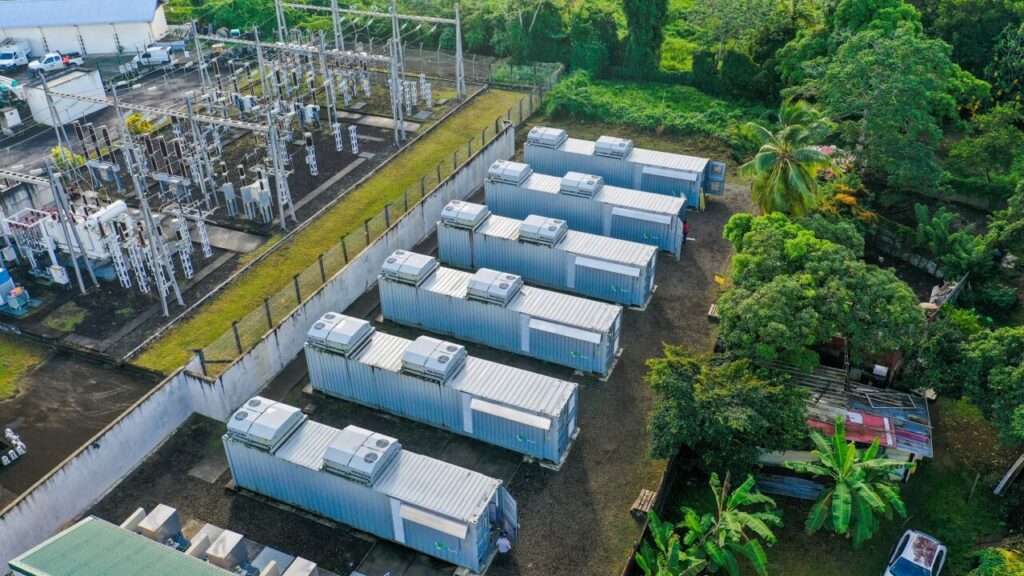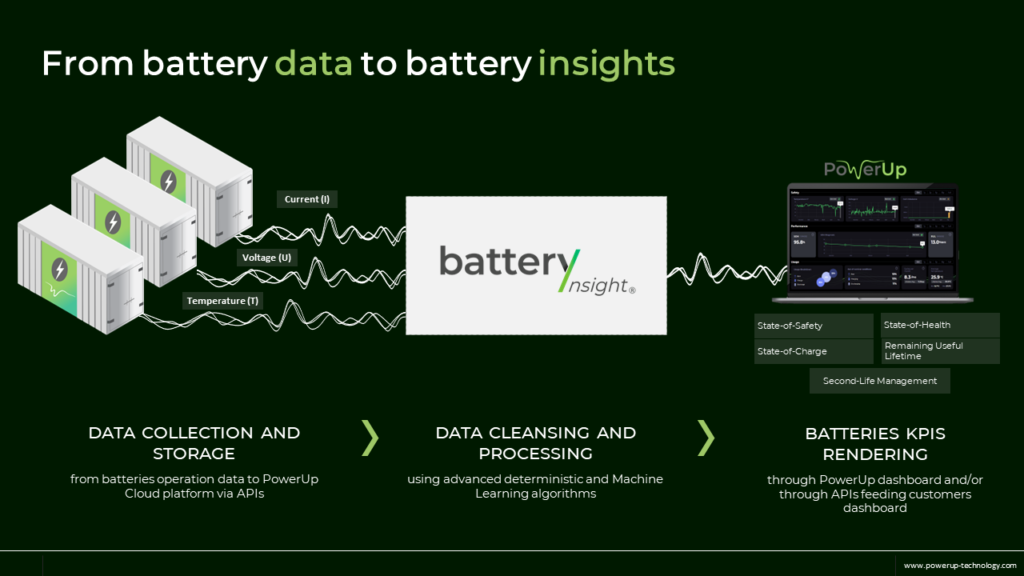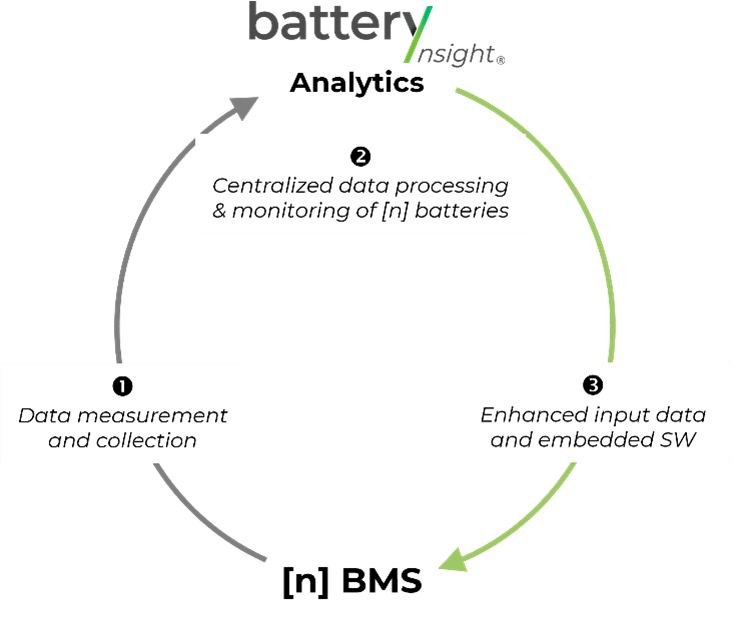
If you’re working with or investing in battery storage, smart battery analytics can be the difference between success and failure. Energy-Storage.news speaks with Dr Arnaud Delaille, PowerUp.
Perhaps the most versatile and exciting among the clean energy technologies, battery energy storage system (BESS) assets are also among the most complex. BESS projects all over the world are key enablers of renewable and low carbon energy networks and allow investors to tap into new revenue streams for providing essential value.
Enjoy 12 months of exclusive analysis
- Regular insight and analysis of the industry’s biggest developments
- In-depth interviews with the industry’s leading figures
- Annual digital subscription to the PV Tech Power journal
- Discounts on Solar Media’s portfolio of events, in-person and virtual
Or continue reading this article for free
However, given that complexity, BESS operators face challenges in safety assurance, in managing their dependencies on system providers, and in maximising asset revenue.
PowerUp, a premier battery analytics provider, tackles these issues with advanced electrochemistry and data expertise. The solution facilitates early malfunction detection, provides a transparent third-party perspective, empowering customers to make informed decisions, and optimise BESS performance and safety across diverse usage profiles.
Dr Arnaud Delaille is PowerUp’s chief science and innovation officer.
What are battery analytics solutions, and who can benefit from using them?
Battery analytics solutions leverage advanced algorithms and real-time monitoring for data-driven assessment, management, and optimisation of Battery Energy Storage Systems (BESS).
These solutions analyse key data points from Battery Management Systems (BMS), including temperature, voltage, and current, providing insights into battery safety and health.
Stakeholders benefiting from battery analytics include:
• BESS owners and investors: during design, analytics aid in sizing the system, choosing suitable battery cells, and meeting performance objectives. In commissioning, it validates system operation and proper integration.
• BESS operators (independent power producers, developers, system integrators): operators utilise analytics for continuous monitoring and optimising performance and safety. It manages charge cycles, ensures optimal state-of-charge, and provides early warnings for proactive maintenance, reducing downtime and repair costs.
• Insurance Companies: Playing a crucial role in the BESS value chain, insurance providers utilise battery analytics for risk assessment, loss prevention, premium determination, and claims processing. Analytics can help avoid business interruption claims altogether by returning assets to service with the deductible period.
Batteries will be used in many different ways to store energy; serving different applications in different scenarios. Can the use of analytics be adapted to be useful across a broad range of scenarios?
Absolutely, the adaptability of battery analytics is a cornerstone of its effectiveness. Battery analytics relies on a sophisticated combination of advanced yet standardised algorithms, complemented by machine learning capabilities. These algorithms are designed to extract value from any type of battery application, whether it involves frequency regulation, energy shifting, balancing mechanism or other scenarios.
The strength of battery analytics lies in its ability to provide a versatile solution for diverse applications. Standardised algorithms ensure a consistent and high level of performance across various scenarios.
However, recognising that each application may have unique requirements, battery analytics is further enhanced by an expert support team. This dedicated team plays a crucial role in calibrating the algorithms to address the specific needs of each application.

Their expertise ensures that the analytics system is finely tuned to the intricacies of different use cases, providing operators with tailored insights and support in their everyday asset analysis. This combination of advanced algorithms and applied expertise makes battery analytics a powerful and adaptable tool kit for optimising battery performance across a broad range of energy storage scenarios.
How can the smart application of analytics make battery operation even safer?
While the Battery Management System (BMS) remains paramount for ensuring the safety of battery operations, it is primarily designed to monitor and control the battery within the manufacturer’s specifications. However, the smart application of battery analytics serves as a crucial complement to BMS.
Battery analytics excel in early detection of potential malfunctions, such as cell imbalance or abnormal temperature and voltage conditions. These indicators may initially impact the performance of the asset before leading to safety issues if left unaddressed.
By offering a more comprehensive and nuanced analysis of the battery’s behavior, analytics provide a proactive layer of protection, enabling operators to identify and rectify issues before they escalate into safety concerns.
This dual approach, combining the shutdown capability of BMS with the predictive capabilities of analytics, employs a holistic strategy for enhancing both the performance and safety of battery operations.
What are the most important aspects of battery analytics that someone considering investing in battery storage should consider?
When contemplating an investment in battery storage, it is paramount to recognise the significance of data access and negotiation with system providers, including integrators and Original Equipment Manufacturers (OEMs).
Access to comprehensive and stored battery data from the energy storage system is critical for effective battery analytics. It is imperative to establish clear agreements with system providers regarding data accessibility, ensuring that the necessary information is available for in-depth analysis.
As part of this comprehensive approach, battery analytics providers play a crucial role in assisting you in determining the optimal level of data required. Their expertise ensures a cost-effective strategy for data collection and storage while focusing on the relevance of the data to enhance battery health and safety algorithms.
Moreover, the timing of integrating battery analytics is crucial. Consideration should begin well before project finalisation and commissioning.
Incorporating analytics into the planning and design phases allows for a proactive approach in ensuring optimal system performance and mitigating potential malfunctions or safety concerns. Early adoption of battery analytics enables thorough monitoring from the outset, facilitating the identification and resolution of any issues before they escalate.
By addressing data access and integration timelines, investors can maximise the benefits of battery analytics, enhancing the overall efficiency, safety, and endurance of their battery storage investment. This strategic approach ensures that the investment not only meets immediate energy storage needs but is also future-proofed for evolving regulations and industry advancements.

Why does analytics require specialist providers such as PowerUp, versus relying on the battery management system (BMS) alone, or developing analytics in-house?
Battery analytics necessitate specialist providers like PowerUp for several reasons. Firstly, while Battery Management Systems (BMS) are essential for monitoring specific cells and modules, their scope is often narrow, and their computing capabilities are limited. BMS is primarily focused on local management within the battery itself, offering insights into internal parameters. However, it lacks the broader perspective needed for comprehensive performance optimisation and predictive analysis.
In a nutshell, the BMS can be compared to an airplane cockpit while battery analytics are more akin to an air traffic control tower: they have distinct yet complementary roles in managing battery systems.
While the BMS ensures the immediate safety and well-being of individual cells and packs, battery analytics take a more strategic approach, focusing on the broader health and performance of the entire battery ecosystem on the one hand; and its predictive safety on the other.
Secondly, battery analytics demand advanced electrochemistry and data expertise, which go beyond the capabilities of a typical BMS. Specialist providers like PowerUp bring a wealth of knowledge in interpreting complex electrochemical interactions and developing sophisticated algorithms to extract meaningful insights from extensive datasets. This expertise is vital for predicting potential issues, optimising performance, and ensuring the longevity of battery systems.

Furthermore, developing in-house analytics solutions may pose challenges due to the specialised skill sets required, potentially resulting in suboptimal performance and increased development costs. Specialist providers, such as PowerUp, bring a proven track record of success and a deep understanding of the intricacies of battery systems.
Lastly, battery analytics offer an objective, third-party view for BESS operators. This is particularly important as operators often have dependencies on their system providers, including integrators and Original Equipment Manufacturers (OEMs).
An independent analytics provider offers unbiased insights, contributing to a more transparent and reliable assessment of the BESS’s performance, efficiency, and safety. This external perspective is crucial for making informed decisions and ensuring the optimal operation of energy storage systems.
Dr Arnaud Delaille was among speakers in a recent Energy-Storage.news webinar hosted with PowerUp, ‘The economic benefits of cloud-based battery analytics for energy storage assets’, which you can watch below:
